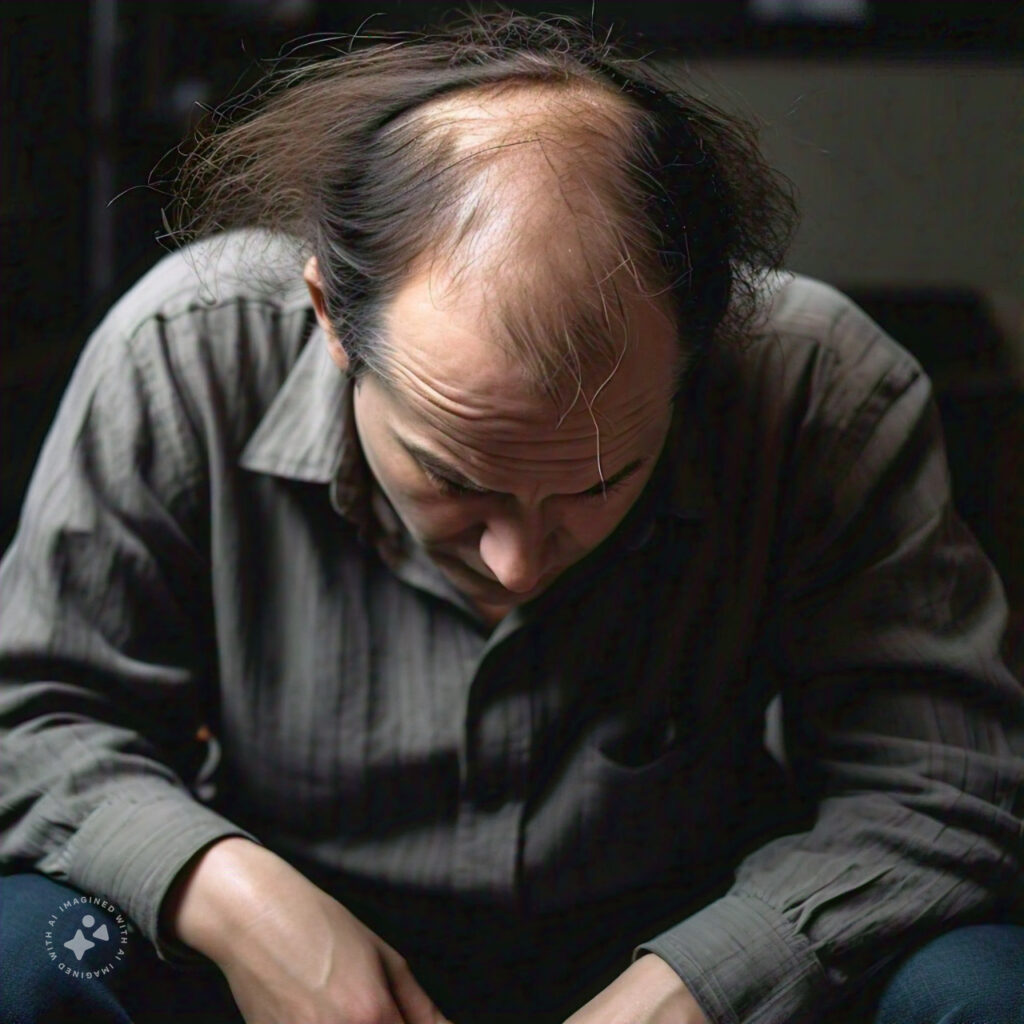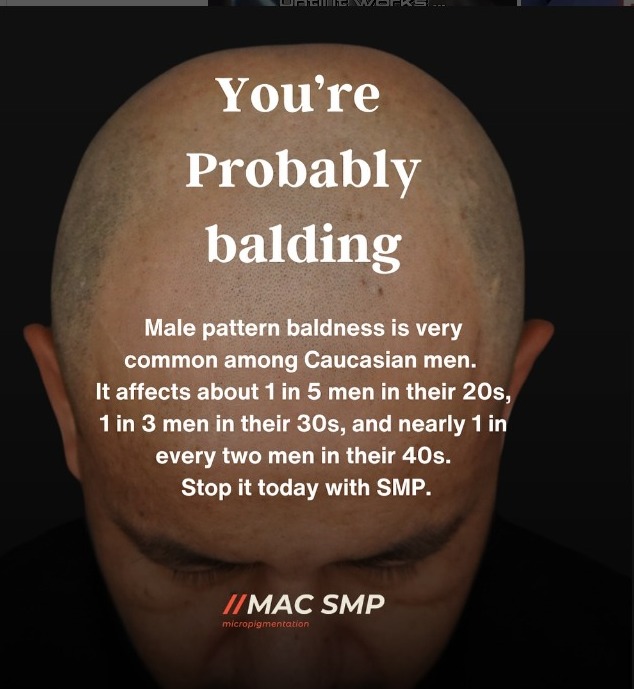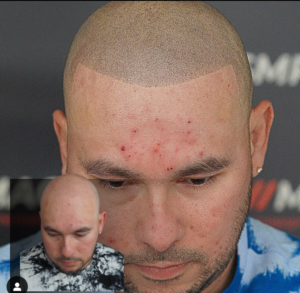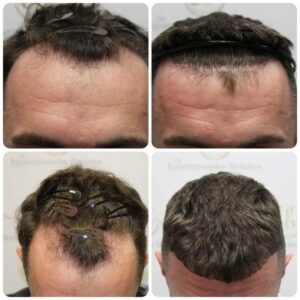Hair loss thinning can be distressing for anyone experiencing it. While hair loss is a common issue, it affects people in various ways, both emotionally and physically.
This health condition results from various different factors, but there are also preventions and treatment options available for patients to explore.
This blog post delves into the causes, prevention strategies, and treatment options for hair thinning and loss. Understanding these aspects can empower individuals to make informed decisions about managing and mitigating hair loss.

Table of Contents
Key Takeaway
Hair loss and thinning can stem from multiple factors, including genetics, hairstyles, radiation therapy, and hormonal changes. Prevention strategies like maintaining healthy hairstyles, managing stress, following a balanced diet, and taking appropriate medications or supplements can help.
Various treatments such as Scalp Micropigmentation (SMP), medications, hair transplants, and Platelet-Rich Plasma (PRP) therapy offer solutions to combat hair thinning and loss.
What are the Causes of Hair Loss Thinning?
They are different types of alopecia and pattern baldness. We will discuss some of the common problems that lead to hair thinning:
Hereditary
One of the most common causes of hair loss is genetics. Androgenetic alopecia, commonly known as male-pattern baldness and female-pattern baldness, is hereditary. This type of hair loss typically follows a predictable pattern, with men experiencing a receding hairline and women noticing thinning on the crown of the head. Hormones and the natural aging process influence genetic hair loss.
Hairstyles
Certain hairstyles can contribute to hair thinning and loss. Hairstyles that pull tightly on the hair, such as braids, ponytails, or buns, can cause traction alopecia. This condition results from prolonged tension on the hair follicles, leading to damage and eventual hair loss. Over time, repeated stress on the hair can weaken the follicles, causing them to become permanently damaged.
Radiation Therapy
Radiation therapy, commonly used to treat cancer, can cause hair loss in the area being treated. This type of hair loss occurs because radiation damages the hair follicles, preventing them from growing new hair. While hair may regrow after the completion of treatment, it can sometimes be thinner or of a different texture.
Hormonal Changes
Hormonal imbalances or changes can also lead to hair thinning. Conditions such as pregnancy, menopause, thyroid problems, and polycystic ovary syndrome (PCOS) can disrupt the normal hair growth cycle, causing hair to thin or fall out. Hormonal changes can affect the production of hair-growth-stimulating hormones, leading to noticeable hair loss.
Symptoms of Hair Loss Thinning
Gradual Thinning on Top of the Head
A common symptom of hair thinning is the gradual reduction of hair volume on the top of the head. This type of hair loss is often seen in both men and women. Men might notice a receding hairline or thinning at the crown, while women generally experience a broadening of the part in their hair.
Sudden Loosening of Hair
Sudden hair loss can occur due to physical or emotional shock. This condition, known as telogen effluvium, causes many hair follicles to enter the resting phase simultaneously. As a result, affected individuals may notice significant hair shedding when combing or washing their hair. This hair loss is usually temporary, but it can be alarming.
Circular or Patchy Bald Spots
Some people experience hair loss in the form of circular or patchy bald spots. This condition, alopecia areata, occurs when the immune system attacks the hair follicles. These patches can vary in size and may appear on the scalp, beard, or other body parts. In some cases, hair may regrow in these areas, but it can also fall out again.
Prevention of Hair Loss/Thinning
There are a few preventive measures to stop hair loss. It is important to adhere to these precautions when your hair loss is in its early stages. Let us look at some of the ways you can stop receding hairlines:
Hairstyles
Choosing hairstyles that do not put excessive tension on the hair can help prevent traction alopecia. Opt for loose hairstyles and avoid using headbands or clips that pull tightly. Alternating hairstyles regularly and giving your hair breaks from extensions or braids can also reduce the risk of hair thinning due to styling.

Image Credit: Pexel
Stress
Managing stress is crucial for overall health and can positively impact hair health. According to research, chronic stress has been shown to disrupt the hair growth cycle, leading to hair loss thinning. Stress-reducing activities such as yoga, meditation, exercise, and adequate sleep can help maintain healthy hair.
Healthy Diet
A balanced diet rich in essential nutrients supports healthy hair growth. Nutrients such as vitamins A, C, D, E, zinc, iron, and omega-3 fatty acids are vital in maintaining hair health. Including various fruits, vegetables, lean proteins, and whole grains can provide the necessary nutrients for strong and healthy hair.
Medication and Supplements
Certain medications and supplements can help prevent hair loss and promote hair growth. Over-the-counter products like minoxidil and prescription medications like finasteride can be effective for some individuals. Supplements containing biotin, collagen, and other hair-boosting nutrients can also support hair health. However, consulting a healthcare professional before starting any new medication or supplement is essential.

Image Credit: Pexels
Treatment Options for Hair Loss Thinning
There are various options to explore when treating hair loss thinning, especially with new technological developments emerging faster than ever. These treatments ranges from medical to non-surgical solutions, and they include the following:
Scalp Micropigmentation (SMP)
Scalp Micropigmentation (SMP) is a non-surgical cosmetic procedure that creates the illusion of fuller hair. This treatment involves injecting pigment into the scalp to replicate the appearance of hair follicles. SMP can be an excellent option for individuals with thinning hair or those looking to enhance the appearance of their hair density.
At Mac SMP, you get one of the best places for non-surgical treatment for hair loss thinning.
Medication
Medications are a common treatment for hair loss. Minoxidil (Rogaine) is a topical treatment that can be applied to the scalp to stimulate hair growth. Finasteride (Propecia) is an oral medication that reduces hair loss by blocking the hormone responsible for hair follicle shrinkage. These medications can be effective, but results vary and may have side effects.
Hair Transplant
A hair transplant is a surgical procedure where hair follicles are moved from a donor area (usually the back of the head) to a thinning or balding area. There are two primary methods: Follicular Unit Transplantation (FUT) and Follicular Unit Extraction (FUE). Both techniques have high success rates but require careful consideration and consultation with a qualified surgeon.
Platelet-Rich Plasma (PRP) Therapy
PRP therapy involves drawing a small amount of the patient’s blood, processing it to concentrate the platelets, and injecting the platelet-rich plasma into the scalp. The growth factors in PRP can stimulate hair follicles and promote hair growth. This treatment is minimally invasive and can be an effective option for those experiencing hair thinning.
Wrapping Up
Hair loss thinning can significantly impact an individual’s self-esteem and quality of life. Understanding the causes, symptoms, and prevention strategies can help manage this condition effectively.
With various treatment options, from medications and supplements to advanced procedures like SMP and PRP therapy, individuals have multiple avenues to explore in their journey toward healthier hair. Consulting with healthcare professionals and specialists can provide personalized recommendations and the best possible outcomes.
Enjoy This Article? You May Also Like:
- Scalp Micropigmentation Training: From Beginner To Mastery – The Ultimate Guide To Becoming An SMP Technician
- Hair Thinning: Why Your Hair Are Thinning And What To Do About It
- How To Address A Thinning Hairline: Tips And Treatment
- Micropigmentation Of The Scalp: What You Need To Know Before Getting It Done
- Discover The Best Scalp Micropigmentation In White Plains –Mac SMP



